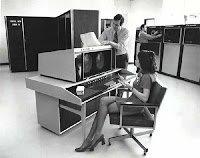 I have sat through, by my estimate, more than a thousand lousy presentations. You know the ones: someone in a suit stands at a lectern and dryly reads PowerPoint bullets for a half-hour, or an hour, or sometimes even longer. The slides use a garish corporate template and contain unreadably-small text, save for a few lame clip-art images. Ugh.
I have sat through, by my estimate, more than a thousand lousy presentations. You know the ones: someone in a suit stands at a lectern and dryly reads PowerPoint bullets for a half-hour, or an hour, or sometimes even longer. The slides use a garish corporate template and contain unreadably-small text, save for a few lame clip-art images. Ugh.
Even worse, I've given hundreds of similar presentations.
Luckily for me and other poor presenters, Garr Reynolds has been providing expert critique, tips and examples to help people present better on his Presentation Zen website. (I've written about Garr's work a number of times: 1, 2, 3, 4.)
Now, he's assembled his ideas into a book.
As you might expect, Presentation Zen: Simple Ideas on Presentation Design and Delivery is beautifully designed and laid out. With lots of white space, beautiful pictures, and a nice variety of page layouts, it reinforces its theme by its very look. [Similar to Edward Tufte's books, Presentation Zen is fun to flip through just to look at the pictures.]
If you didn't think you could say more with less text, or didn't know how to find cool photographs that would actually enhance your message, or didn't know how to make your subject as compelling to the audience as it is to you, Presentation Zen has insight you need.
While Reynolds echoes themes and specific advice he's presented in his blog, the accrual of the information between the book's covers has a more powerful effect than reading the same material over a long period of time in several blog posts. For example, throughout the book he shows side-by-side comparisons of poor slides and improved ones, or shows a number of different ways of conveying the same information with different slide designs. By the time you get to the end, the message is clear.
In other words, if you read Reynolds' blog regularly, you should still invest in the book. And if you don't read the blog, you should buy the book right away. And start applying the lessons today. [Please! I'm going to another seminar at the beginning of April.]
storytelling, design, presentation, PowerPoint, reading list












